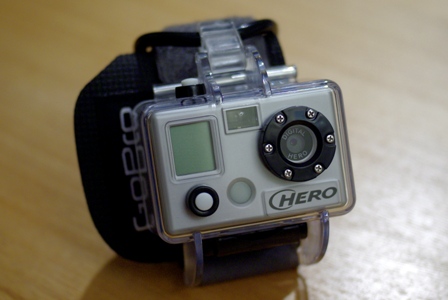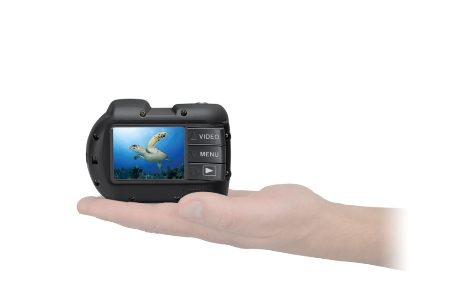 Gopro and Sealife On The Video Technological Edge
Gopro and Sealife On The Video Technological Edge
Gopro Cameras and Sealife Cameras are making their mark with technological advances in building incredible video cameras. These companies are not only fantastic in what their equipment can do, but also providing this technology in very small packaging. Personally, over the years, I remember dragging cases of underwater photography gear, all across this planet, in large dry Pelican cases. It seemed, that on my arrival, sherpas were necessary, to attend the behemoth job of getting this equipment to my dive destination…but no more! Now, one can put three small cases in the bottom of a travel bag, and have a fantastic video/photo camera, and a light system with two video lights. Also, because of the light weight of the equipment, one can get the job done under the fifty pound airline restriction.
I, recently, had the opportunity of using the Gopro Hero 4 Black in November, in Nassau. Also, I was able to use the Sealife Micro HD camera in Bonaire this past January. By getting the opportunity to use both, I was able to build a consensus, personally, as to what I really like about both camera systems. Also, I was able to see what I didn’t care for as well.
The Good, The Bad, And The Ugly
Both cameras were wonderful. They both took amazing video that would rival documentary programming on the Discovery Channel. The small size is awesome. A diver is able to be streamline, without creating the drag of carrying larger pieces of video equipment. The Gopro is smaller than the Sealife Micro. The Sealife Micro is still very small, and will fit in your hand. Both work well in shallow water in ambient light, without a video light. Both, however, need red filters to take out the blue color, to get a better representation of the video. The Gopro needs an external red filter that is applied to the lens. The Sealife Micro has two red optical filters built into the camera. One is used in shallow water, the other on deeper dives. The disadvantage of the Gopro is that these filters have to be purchased as accessories.
Both cameras have buttons to stop and start the video, set up you basic settings, and take photos. I felt the buttons on the Gopro, which are much smaller than the piano keys on the Sealife, were more difficult to maneuver.
The battery life on the Gopro with a video monitor, had a life of about forty minutes. In the course of the day, I had to have 3 individual batteries swapped out, in order to take the video clips I wanted. Two of the batteries had to be purchased, besides the one that came with the camera. I was also, having to break the seal on the Gopro underwater housing five times over the dive day. That’s a lot of wear and tear on that protective O ring. I, also happened to notice Gopro’s warranty on their website. There is no warranty for flooding the unit. You can find that information near the bottom of the warranty here… Gopro users watch that O ring! The Sealife Micro has an internal battery life of three hours. For me, I happen to shoot my video to edit. I learned that, after the Egypt trip in 2000, whereby, I had forty hours to watch, much less edit the footage, to make a video. So, by being more economic in the shots I took, I only had to recharge the battery only once, during our entire week in Bonaire. 
Memory is a different issue with both cameras. The Gopro can have up to 132 GB, but the micro sd card must be purchased separately. The Sealife Micro gives you an internal memory of 16 GB, or the Micro HD with 32 GB, which comes with the camera. 132 GB is a lot of memory, and even with having to make a separate purchase, holds a strong hand. I wasn’t entirely disappointed with the 32 GB of the Sealife, however. Over the week, I only used 7 GB. When I edited the footage, I used half of that, to make a twenty minute video of our trip.
Both cameras, the Gopro, and the Sealife Micro HD (32 GB) have wifi capability to download to your Apple and Android devices (The Sealife Micro 16 GB, wifi is not available). Both Sealife Micros, the 16 GB and 32 GB, have USB cable to download to your pc, to do your editing.
To read more of the technical specs on both cameras, you can read about the Gopro here… And to read about the Sealife Micro HD, click here…
Pricing will also play a part in your decision. The Gopro is about $100.00 cheaper than the Sealife Micro HD. However, after adding a monitor (It doesn’t come with one),extra batteries, red filters, and micro HD card, you’re way ahead with the Sealife.
The Final Analysis
Both cameras get the job done, but for my money, I feel, for diving, the Sealife Micro HD, is the best way to go. If you’re looking for an action camera, with plenty of adapters to put the camera on your dog, skateboard, or airplane, I think the Gopro is probably your best bet. If you are looking for an underwater video camera, large piano keys, great battery life, and enough storage to get your videos done, the Sealife Micro is for you.
